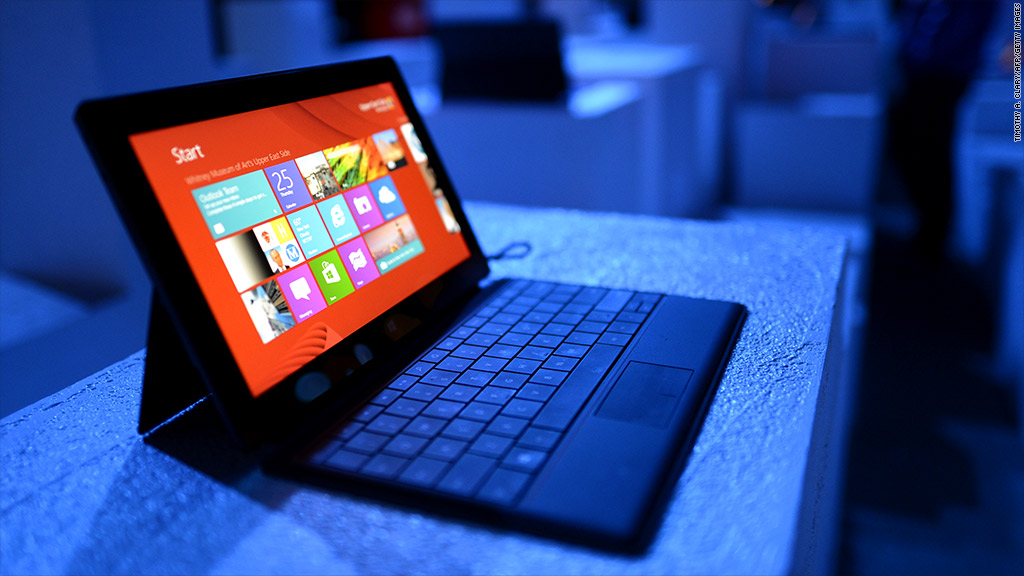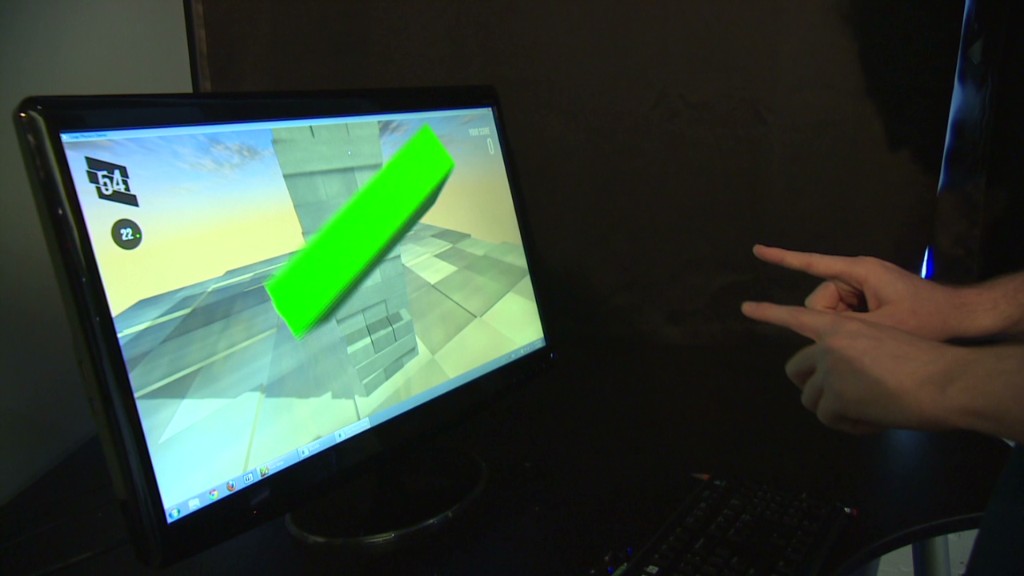
When Microsoft introduced Windows 8, its goals were ambitious: a single operating system for both computer and tablet. When it unveiled the Surface, it upped the stakes: One single device promised both laptop and tablet experiences. No compromises.
That didn't work. It won't ever work.
The Surface RT is a very good (if not quite great) piece of hardware with some of the most innovative design ideas we saw in 2012. It wasn't, however, a pure laptop and pure tablet in a single piece of hardware.
At the Consumer Electronics Show this month, Microsoft showed me the more powerful Surface Pro, which will hit store shelves next month.
At a glance, there's nothing radically different about the Surface Pro from its less expensive and more limited Surface RT counterpart. Under the hood, its 1080p display is sharper, and its Intel Core i5 processor makes everything faster and smoother. It runs legacy Windows apps and includes a pressure-sensitive stylus, a rarity for touchscreen devices.
Those upgrades, though, come at a cost -- and I'm not talking about its price tag. The Surface Pro is more than half an inch thick and weighs two pounds. That's fine for a laptop. For a tablet, it's borderline obese. Its battery performance will likely also lag behind other tablets.
Where the Surface RT is a tablet that can do some laptop-y things, the Surface Pro is a laptop that can do some tablet things. If this isn't a killing of Microsoft's initial fusion vision, it's certainly a neutering.
It also speaks to a higher truth. The mythical hybrid computing device we all envision may never exist because it's exactly that: a myth.
Related: 5 new looks for your future PC
Microsoft isn't the only one striving for the elusive laptop/tablet bridge. Asus, Acer, Dell (DELL), HP (HPQ), Lenovo and Samsung have all produced hybrid devices that dock, detatch, twist, turn, fold, bend, swivel and slide. Even Apple (AAPL), a company openly opposed to producing an all-out hybrid, spent the last year implementing shared elements between its mobile iOS and desktop OS X.
Processor power challenges, battery life and those awful tablet keyboard docks aren't the real problem. Those are all fixable.
The fatal flaw is a design issue. Trying to jam a PC's functionality into a tablet-like shell is akin to hosting a dinner party around a cocktail table. No matter how many clever tricks you use, it's going to feel weird.
One core problem is the device's most fundamental feature: its size. No hardware maker has been able to find an elegant solution to the visual discrepancies -- screen size and aspect ratio -- between the laptop and tablet forms.
Laptop displays are generally at least 11.5 inches, and the 16:9 aspect ratio is almost an industry convention. That long rectangle gives us room to manipulate a windowed environment. Anything smaller requires voodoo to conjure a good experience out of the machine.
Tablet displays more or less max out at 10 inches, and the industry-leading iPad opts for a 4:3 aspect ratio. That lends itself to books, magazines, and Web pages.
With the Surface, Microsoft hedged its bet, and went with a 10.6-inch, 16:9 display.
That strikes the best balance we've seen yet between physical and digital usability, but it's still far from perfect. Oversized tablets with a 16:9 aspect ratio feel awkward. Perhaps people have been conditioned to believe that words are best consumed in a space that feels like a standard, letter-sized paper page.
Aric Cheston, executive creative director at Frog Design, acknowledges an inherent tension.
"There's a certain reality to be embraced about the legacy proportions," he says. "You have to find a smart way of accommodating those."
If the problem can't be solved with clever hardware design, the burden falls squarely on the software.
Microsoft's Windows 8 is the strongest argument that a unified software experience can mask hardware compromises. But it still leans on the traditional desktop environment like a crutch, falling back any time the new "Modern" interface (better known as Metro, its development codename) can't provide a better approach. It's not ideal for smaller screens or fingers, and it comes at the expense of usability.
Dan Saffer, director of interaction design for Smart Design, thinks the gap may be unbridgeable.
"Metro is a great mobile operating system. It's a really smart idea and a completely new paradigm," he says. He thinks that elegance gets lost in its translation to the desktop.
So how can hardware makers get past this rocky transition period?
Cheston suspects that computing will become less dependent on a traditional display. He points to projection technology and the growing power of gesture-based interfaces. A small device projecting a larger visual workspace would free a hybrid gadget from fighting with screen-size discrepancies.

Saffer thinks the quest for one seamless interface across different devices is doomed. He likes the idea of a single operating system, but with separate interfaces for navigation, file management, and apps, tailored for different hardware designs. The view could switch depending on the use case, he suggests.
Then there's a radical alternative: Perhaps Microsoft (MSFT) simply needs to go all-in with its Metro interface and ditch the windowed style of computing entirely.
Windows 8 already shares more than a few similarities with a concept design called 10/GUI, which designer R. Clayton Miller conceived as a way to bring a touch-style computing experience to the desktop. It's got navigational nuances that lend themselves to on-screen touch much better than the non-Metro interface in Windows 8.
Miller's 10-minute manifesto video sums up his concept far more effectively than words can, but its most powerful idea hinges on the abolishment of freestanding windows and the adoption an oversized, multitouch trackpad that correlates any touch to the same relative position on the screen.
That kind of radical re-conception could scare customers.
Microsoft is still wading in the shallow end with Windows 8, though, and its Surface struggles make one thing very clear: there is no true hybrid on the horizon. Any expectation that one slab of hardware can fully replace your tablet and your PC is both unrealistic and futile.

